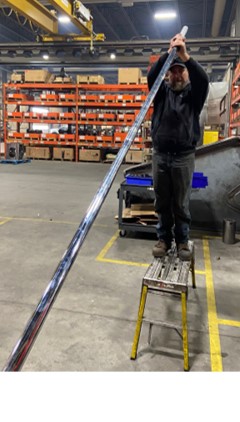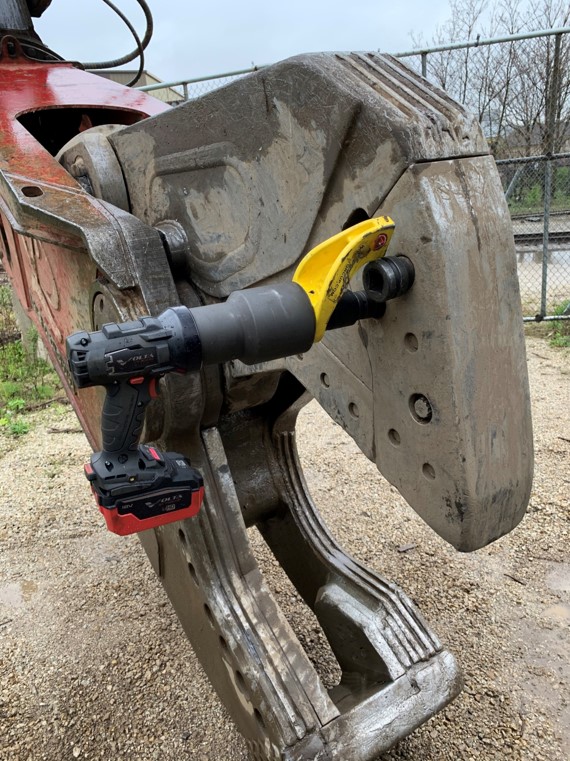
In the demolition and scrap industries, mobile shears are indispensable tools. Whether you’re operating ShearCore®, Genesis®, LaBounty®, or any other brand of shear, maintaining proper bolt torque on shear blades is critical for optimal performance, safety, and longevity. Here’s what every shear operator and maintenance crew needs to know about mobile shear blade torque.
Why is Proper Blade Bolt Torque Crucial?
Mobile shears endure extreme conditions during operation. Two primary factors contribute to torque loss in shear blade bolts:
- Extreme Force During Open Cycle: The immense forces generated during the open cycle can loosen bolts, causing the blades to shift or become misaligned.
- Heat Buildup: The high temperatures generated during continuous operation can weaken the bolt’s clamp force, leading to torque loss.
Failure to maintain proper torque can result in blade damage, increased wear and tear, or even catastrophic equipment failure.
Where do I Find the Proper Bolt Torque for my Shear?
Bolt torque specs are critical information for keeping your bolts, blades and shears running optimally. If you don’t know the torque specs, check the OEM parts book or SOM for your unit. If that information is unavailable, contact the service team representing your shear to get the correct torques.
How Often Should You Check Torque?
To ensure the reliability and efficiency of your mobile shears:
- Standard Operations: Check and re-torque blade bolts every 8 hours of operation.
- Extreme Applications: In more demanding scenarios, re-torque every 4 hours.
Frequent torque checks are essential, especially when working in high-heat or high-force environments, to prevent costly downtime and maintain safety standards.
Best Practices for Torquing Shear Blade Bolts

Using the right tools and techniques is vital for maintaining proper bolt torque. Here’s a guide to get it right:
Tools for the Job
- Torque Multiplier: Use a multiplier with a ratio of 4:1, 13.6:1 or 18.5:1 to achieve precise torque with less effort.
- Battery Torque Tools: Brands like Hy Torque or TorcUP offer reliable options.
- Hydraulic Torque wrenches: This application will need a Hydraulic power pack.
- High-Capacity Torque Wrench: If you prefer manual methods, a 1000 lbs. torque wrench can be effective if you have the strength and precision required.
Avoid These Common Mistakes
- Under-Torquing: Insufficient torque can cause bolts to loosen, compromising blade stability and increasing the risk of damage.
- Over-Torquing: Excessive torque can lead to bolt breakage or deformation, making repairs costly and time-consuming.
Relying on Impact Guns or Breaker Bars: These tools are not designed for precise torque application and should never be used to tighten blade bolts
The Consequences of Neglect
Neglecting proper torque maintenance can lead to:
- Unplanned Downtime
- Reduced cutting efficiency
- Increased risk of equipment failure
- Higher maintenance costs
- Operator safety hazards
By prioritizing proper torque practices, you can maximize the performance and lifespan of your mobile shear blades, ensuring efficient operation and reduced downtime.
Maintaining correct bolt torque for mobile shear blades is non-negotiable for anyone working with shears in the demolition and scrap industries. Whether you’re using ShearCore® blades, Genesis® shear blades, or LaBounty® shear blades, make regular torque checks and proper tool use a cornerstone of your maintenance routine. Remember, investing time in torque maintenance today prevents costly repairs and downtime tomorrow.
Stay safe, stay efficient, and keep those bolts torqued!

